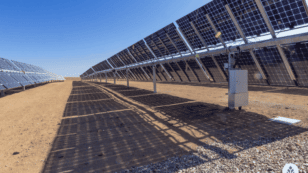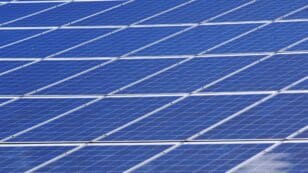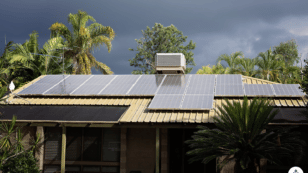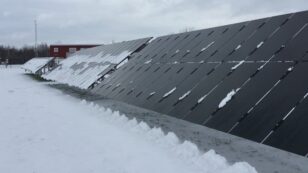
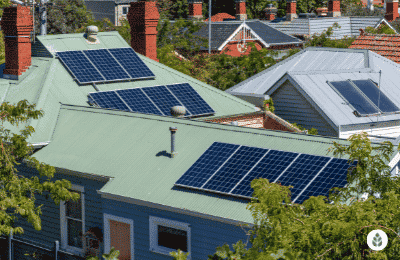
How Much Do Solar Panels Save Homeowners? (2024)
In this guide, you’ll learn:
- How much money you can save with different solar system sizes
- Which solar financing options lead to the greatest ROI
- Which solar providers can help you save the most
Each product and or company featured here has been independently selected by the writer. You can learn more about our review methodology here. If you make a purchase using the links included, we may earn commission.
With electric bills sitting higher than ever before and showing no signs of slowing down in the future, adopting clean energy is a great option for most property owners. Most prospective solar customers interested in renewable energy look at the average cost of converting— around $20,979 after the federal tax credit—and wonder, how much do solar panels save homeowners on average?
In this article, we’ll explain what factors affect your cost of going solar, how to determine what your long-term energy savings will be and, ultimately, how to figure out if solar is a good option for your home.
Will Solar Panels Really Save You Money?
In most cases, yes. Going solar is expensive, totaling just under $30,000 before any perks and a little under $21,000 after the federal tax credit. However, the average solar panel system will provide savings on your energy bills that add up to that amount and more over the lifespan of the panels.
In fact, the average profit enjoyed by most solar customers over the life of their systems is over $31,513, and again, that’s after the panels pay for themselves.
It’s important to note that these numbers are just averages, and there are a few key factors that can affect your costs and savings projections. The table below includes a quick look at average savings based on solar power system size.
Keep in mind that the total average savings in the last column don’t take the rising costs of fossil fuels and electricity into account, nor do they consider additional local tax incentives or rebates. This number is likely to be considerably higher in real-world applications.
In the sections that follow, we’ll dive into some of the factors that have an impact on the cost of solar panels and expected savings.
| Solar Power System Size* | Avg Monthly Savings** | Avg Annual Savings | Total Avg Savings Over Life of Solar Panels (After Panels Pay for Themselves) |
| 5 kilowatts (kW) system | $77.26 | $927.12 | $6,528.00 |
| 6 kW system | $92.71 | $1,112.52 | $7,833.00 |
| 7 kW system | $108.16 | $1,297.92 | $9,138.00 |
| 8 kW system | $123.61 | $1,483.32 | $10,443.00 |
| 9 kW system | $139.06 | $1,668.72 | $11,748.00 |
| 10 kW system | $154.51 | $1,854.12 | $13,053.00 |
| 11 kW system | $169.96 | $2,039.52 | $14,358.00 |
*Since the size of your array should be based on your energy demands, the numbers in these tables are for a home in which the energy demands are expected to be 100% met by a 9 kW system.
**Monthly savings are based on the assumption that local electricity rates are equal to the national average of 16.79 cents per kilowatt-hour (kWh).

Blue Raven Solar

Regional Service
Average cost
Pros
- Industry-leading in-house financing
- Competitive pricing
- Excellent reputation
Cons
- Doesn't offer solar batteries (coming 2022)

Blue Raven Solar

Regional Service
Average cost
Pros
- Industry-leading in-house financing
- Competitive pricing
- Excellent reputation
Cons
- Doesn't offer solar batteries (coming 2022)
Cost of Installing Solar Panels
The average cost to install a typical 9 kW solar system in the U.S. is $29,970 or $20,979 after the federal investment tax credit (ITC) is considered.
Even this number can vary quite a bit, though, as it depends on the size of your solar energy system, which is directly related to your energy demands, as well as labor costs and the panel brand you have installed. These average installation costs are based on the average per-watt cost for solar equipment of $3.33.
Some installers might discount their prices to remain competitive, while some solar companies charge higher prices for dealing with premium equipment, offering superior warranty protection or offering high-quality customer care.
Since the total is based on a per-watt cost, the installation charges your solar panel installer charges will affect your total price. It’s not uncommon to see installation charges of $4.00 per watt or more, which can drastically increase your total.
The table below includes the average price per watt and the total system installation costs for some of the largest solar contractors in the country. Even these figures can range quite a bit, so if you’re looking for an accurate estimate, we recommend contacting an installer to put together a formal proposal for you.
| Solar Provider | Superlative | Average Cost ($–$$$$$) |
| SunPower | Best National Provider | $$$$$ |
| Momentum Solar | Top Regional Installer | $$$ |
| Blue Raven Solar | Most Flexible Financing | $$ |
| Palmetto | Top Customer Service | $$$ |
| ADT Solar | Superior Warranty Coverage | $$$ |
| Trinity Solar | Solar Veteran | $$$ |
| Tesla | Best Technology | $$ |
Financial Solar Incentives
One of the best ways to save money on your solar conversion is to take advantage of as many solar incentive programs and rebates as you can.
The most attractive incentive for most Americans is the federal tax credit, which currently provides a credit to your income tax liability for 30% of your entire system cost. Based on the average $3.33 per watt and 9 kW system mentioned above, that’s a total potential savings of $8,991. Provided you owe more than that in taxes, this can bring your effective total cost down from $29,970 to $20,979.
Some states—like Arizona, New York and Hawaii—have statewide solar tax breaks as well, which can save hundreds to thousands of dollars, depending on where you live and the status of the perk.
Many states and municipalities have additional incentives you can take advantage of. One of the most popular is net metering, which lets you over-generate power and bank the excess for later use. This helps offset home electricity consumption at night or on cloudy days when energy production dips and normally wouldn’t keep up with consumption. A good net energy metering program can save you thousands over the life of your system, depending on local utility prices and consumption.
A less prevalent solar benefit program involves solar renewable energy credits (SRECs), which you earn for every kW you generate with your system, even if you consume that kW in your home. In states with open SREC markets, you can sell your credits to companies that need to offset their carbon footprints to meet local regulations. SRECs can save a few hundred dollars a year, depending on their value in your local market.
Many utility companies and some towns and cities also offer solar rebates or cashback incentives. Some states offer these as well, including California. The amount these can save you depends on the rebate and, often, on the size of your array. These can range from a few hundred dollars to several thousand.
We recommend you check the Database of State Incentives for Renewables & Efficiency (DSIRE) to see which perks you have access to.
Solar Financing Method
The payment method you use to purchase your solar panels can play a surprisingly important role in your upfront costs and long-term solar energy savings.
Depending on the installer you choose, you’ll have access to up to four payment methods: cash, solar loan, solar lease and power purchase agreement (PPA). We’ll break down the differences between these methods below, and the table that follows should help visualize how your decision can affect your savings over time.
- Cash purchase: Cash purchases cost the most upfront, making them the least accessible. However, you’ll instantly own your panels and won’t pay interest, which means your savings will skyrocket once your panels pay for themselves.
- Solar loan: A loan for solar equipment is more widely accessible because most demand no money down and just require a credit check. The interest you pay will prolong your panel payback period, but after that, you’ll own your system, and your savings will soar.
- Solar lease: A solar lease is an arrangement through which you rent your panels and get to use the energy they produce. You’ll pay a monthly rental fee that won’t go away for the entire lease term, so you never break even and never own your panels. That translates to much lower savings in the long run, but your upfront costs are non-existent in most cases.
- PPA: With a PPA, your panels are installed at no cost to you, but you agree to pay a slightly reduced rate for the electricity they generate. This is a convenient way for property owners who don’t qualify for the other options to support the solar industry, but the savings are the lowest over time of any solar payment option.
| Average Upfront Cost (After ITC) | Average Panel Payback Period | ITC Available? | Estimated Lifetime Savings | |
| Cash Purchase | $29,970 | 11 years | Yes | $24,141 |
| Loan | $0 | 15 years | Yes | $19,000 |
| Lease | $0 | N/A | No | $5,000 |
| PPA | $0 | N/A | No | <$5,000 |
Solar Panel Performance
The performance of your solar panels will have a significant impact on both your upfront system costs and your long-term savings.
Panel performance is usually measured in the efficiency rating, which is a measurement of how much of the available sunlight the panel can convert to usable electricity, and the degradation rate, which tells you how much of that efficiency your panels lose as they age.
The more powerful and durable your panels are, the more they’ll usually cost. For example, SunPower panels are the most capable options, with an industry-leading efficiency rating of 22.8% and minimal degradation over time. However, the manufacturer’s panels are also some of the most expensive, at an average of around $4.00 per watt.
In addition to the panel specifications, there are some other factors to consider that can play a role in how your panels perform. Namely, your latitudinal location, the direction your roof faces, the angle of your roof pitch, local weather conditions and the age of your panels.
Your geographical location and roof pitch need to be considered together. Ideally, your panels will be installed at such an angle that the sunlight hitting them is as direct as possible, as this leads to greater production rates. The ideal angle, though, depends on your latitude. Northern states will need a steeper roof pitch to collect the most intense sunlight.
The direction of your roof matters, too. Since the sun travels through the southern part of the sky, roofs that face to the south are usually the best for solar production. Northern-facing panels have significantly lower generation rates, regardless of panel specs, and western- and eastern-facing roofs fall somewhere in the middle.
Your local weather conditions should be a factor considered by your panel installer. Areas that see a below-average number of sunny days per year will naturally see lower production from their panels, even if all other factors remain the same.
It’s also important to consider the age of your panels, as that degradation rate we mentioned earlier will lead to less and less impressive production over time. Most installers will oversize your system to ensure that, after the first year of accelerated degradation, your panels can still compensate for your home’s energy needs.
Monthly Utility Bills
The last major factor to consider is how much you pay for electricity each month, which depends on your rate of energy usage and the local cost per kWh for energy.
Generally speaking, the more energy you consume, the larger and more expensive your solar system will need to be to compensate for your demands. Still, even large systems typically pay for themselves quickly and provide additional savings equal to a decade or more of what your energy bills would normally be.
Additionally, if you live in a state or city with high electricity prices, your savings are expected to be significantly higher.
For example, in Hawaii, even though the monthly consumption is one of the lowest in the country at around 557 kWh—according to the Energy Information Administration (EIA)—the average solar customer saves around $78,000 by going solar because the local energy prices are nearly triple the national average.
It’s also important to consider your access to net metering once again. Areas with a high cost of energy and access to one-to-one net metering—the credit rate per kWh is equal to the retail rate—will see the highest lifetime savings from their solar energy systems. An alternative to net metering is installing a solar battery, so you could still see those above-average savings even if you don’t have access to net energy metering.
How to Calculate How Much Solar Panels Can Save You
To get an estimate of how much solar panels can save you, we recommend starting by gathering the following information:
- Your local cost of electricity
- Your average monthly electricity consumption
- The typical price per watt for solar installations in your area
You can then estimate the size of the system you’ll need to offset your monthly power bills using the table below:
| Average Monthly Electricity Consumption | Estimated Solar Array Size Requirements |
| 416 kWh | 5 kW |
| 500 kWh | 6 kW |
| 583 kWh | 7 kW |
| 667 kWh | 8 kW |
| 750 kWh | 9 kW |
| 833 kWh | 10 kW |
| 916 kWh | 11 kW |
| 1,000 kWh | 12 kW |
Next, you can multiply your array size in watts (kW*1,000) by your local cost per watt. That’s your expected system cost. You can subtract 30% if you’re able to take the federal solar tax credit.
Finally, take your monthly consumption in kWh, multiply by the typical price per kWh you pay from your electric company, multiply by 12 (for an annual energy cost) and multiply by 25 (for a total lifetime savings). Subtract the estimated cost of your system from that number to get your estimated lifetime savings.
You can also use our solar calculator to get an accurate solar savings estimate that’s customized for your home and energy demands.
Do Solar Panels Affect Your Home Value?
One thing that we haven’t taken into consideration thus far in determining the overall return on investment (ROI) of your solar project is the value your system is expected to add to your home. On average, installing a solar array will boost your property value by around 4.1%. With an average home value in the U.S. of around $426,056, that’s an additional return of $17,468, on average.
Of course, the actual return is expected to decrease as your panels age, so the longer you use your panels yourself to save on monthly electric bills, the less value the system will provide to a prospective buyer. Still, the expected bump in home value is yet another way going solar can effectively save and earn you money.
There are two related things to think about related to your property value increasing. First, a bump in property values means your property taxes should go up too. Thankfully, many states offer a property tax exemption for renewable energy equipment, which means the value your home solar system adds won’t be taxed. There are 33 states that offer at least a partial property tax exemption for residential solar panel systems as of this writing. Those that don’t include the following:
- Alabama
- Arkansas
- Delaware
- Georgia
- Idaho
- Kentucky
- Maine
- Mississippi
- Nebraska
- Nevada
- Oklahoma
- Pennsylvania
- South Carolina
- Utah
- Washington
- West Virginia
- Wyoming
The second thing you should consider in relation to your property value increase is that your homeowner’s insurance could go up. Most insurance providers will automatically include your solar array, but if the value boost is enough to demand a higher coverage limit, then your premium could increase. The increase should be minimal and will be paid off quickly by your energy savings.
The cost information presented in this article is derived from a comprehensive analysis, incorporating data from multiple industry sources. The average cost per watt per state was calculated based on figures from Consumer Affairs, Energy Sage, and Berkeley Lab’s Electricity Markets & Policy Department. Additionally, monthly energy consumption and the average monthly cost of electricity were sourced from the U.S. Energy Information Administration, ensuring a well-rounded and accurate representation of the information presented.
FAQs: How Much Do Solar Panels Save
Since calculating solar savings is so complicated, we get questions often about panel production and energy costs and how they both affect long-term savings. We’ll address some of the more common questions we see below.
The answer to this question depends on many factors, including the cost per watt you pay for your equipment, the efficiency rating and degradation of the panels you have installed, your monthly energy consumption, your local utility rates, your roof pitch and orientation and more. However, the average payback timeline is 12 years. Most U.S. solar customers see payback periods between 6 and 16 years.
Once you pay off your solar panels using your energy bill savings, your panels will continue to offset energy consumption, thereby saving you money that can be considered profit. Each month that goes by after the payoff should net you an average of around $119.74. This number is based on the average price of electricity and average consumption rates in the nation, so your monthly savings could be much higher or lower.
In most cases, yes. Provided your system is sized appropriately for your home’s energy demands, you could see electric bills that average around $0 per month. This is typically only possible if you have access to a good net metering policy, though. Keep in mind that many utility companies charge a flat rate for delivery service, so your bill could be $20 or more per month even if you don’t pull any power from the grid.
Comparing authorized solar partners
-
- Industry-leading in-house financing
- Competitive pricing
- Excellent reputation
- Doesn't offer solar batteries (coming 2022)
A+Best Solar Financing2014Trina Solar, Canadian Solar, SolarEdge, Silfab, SunPower25-year manufacturer warranty; 10-year workmanship warranty, 2-year production guarantee
Having trouble deciding? Click below and use our process to receive multiple quotes instead:

 233k
233k  41k
41k  Subscribe
Subscribe 




